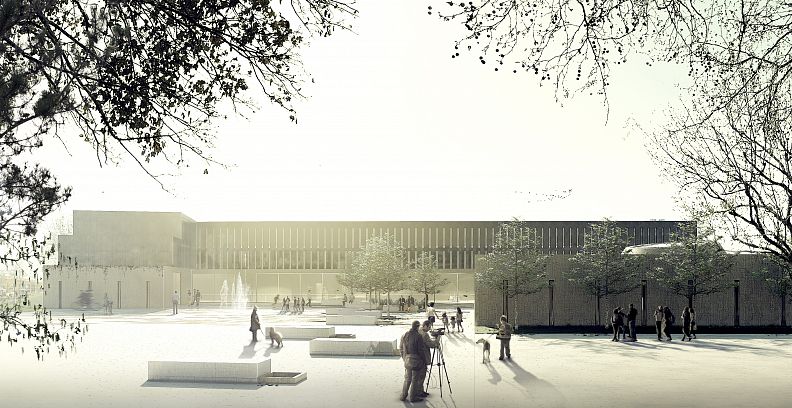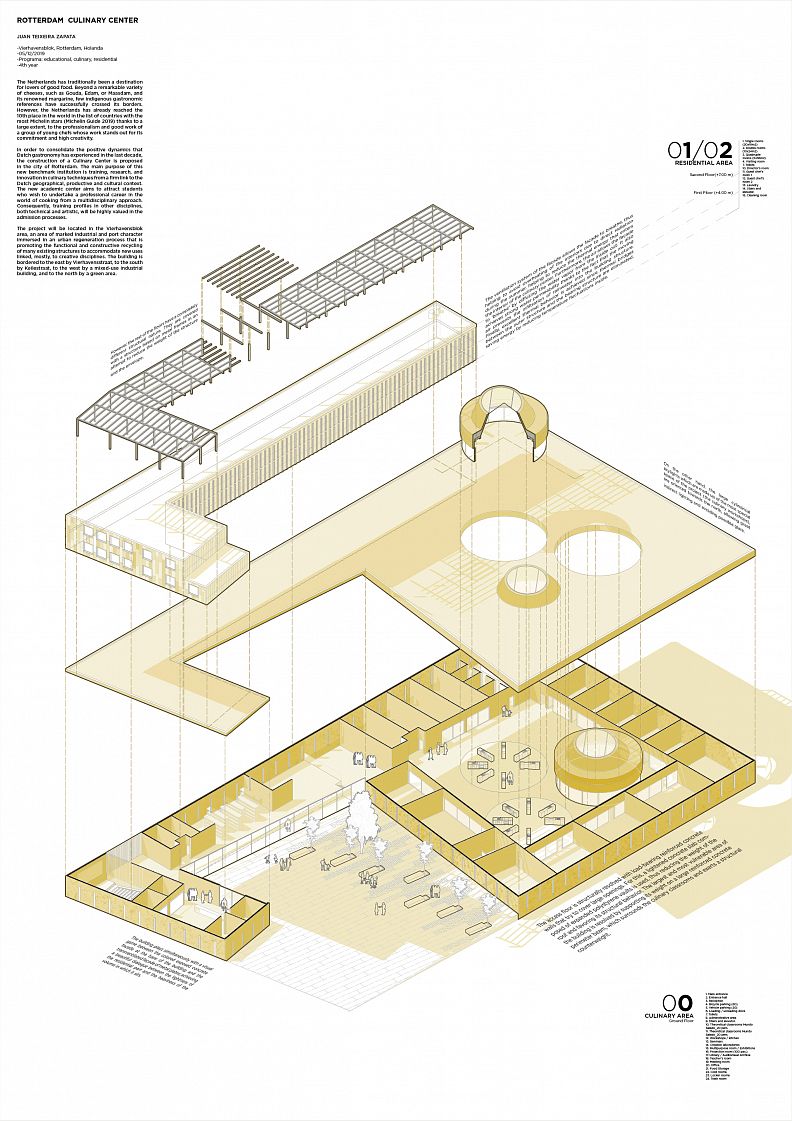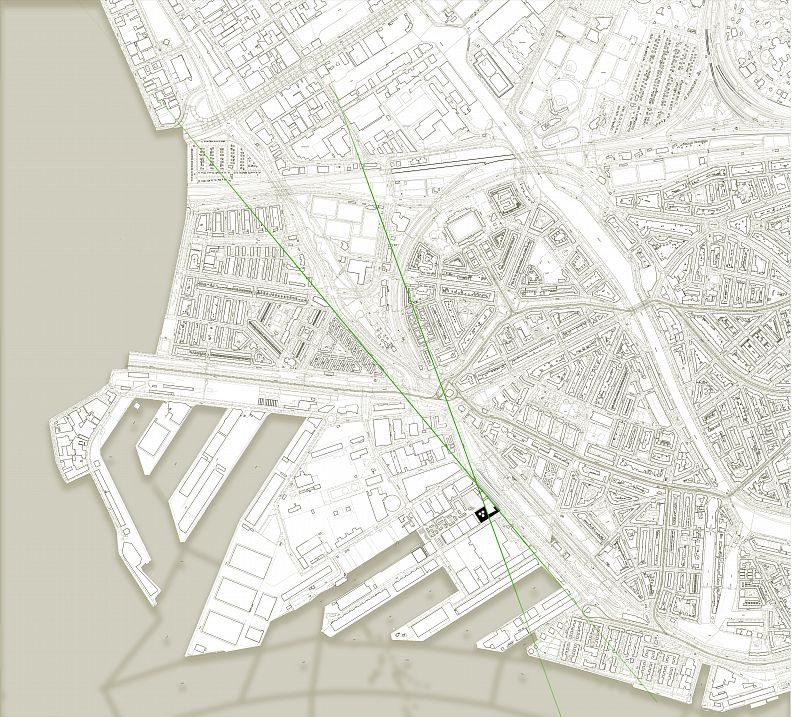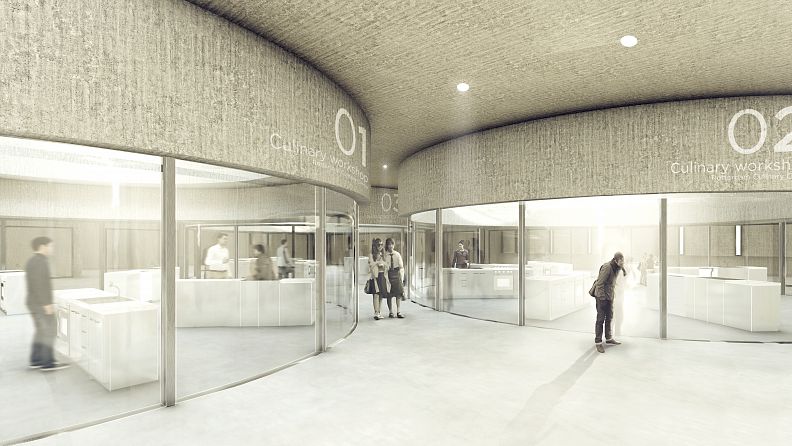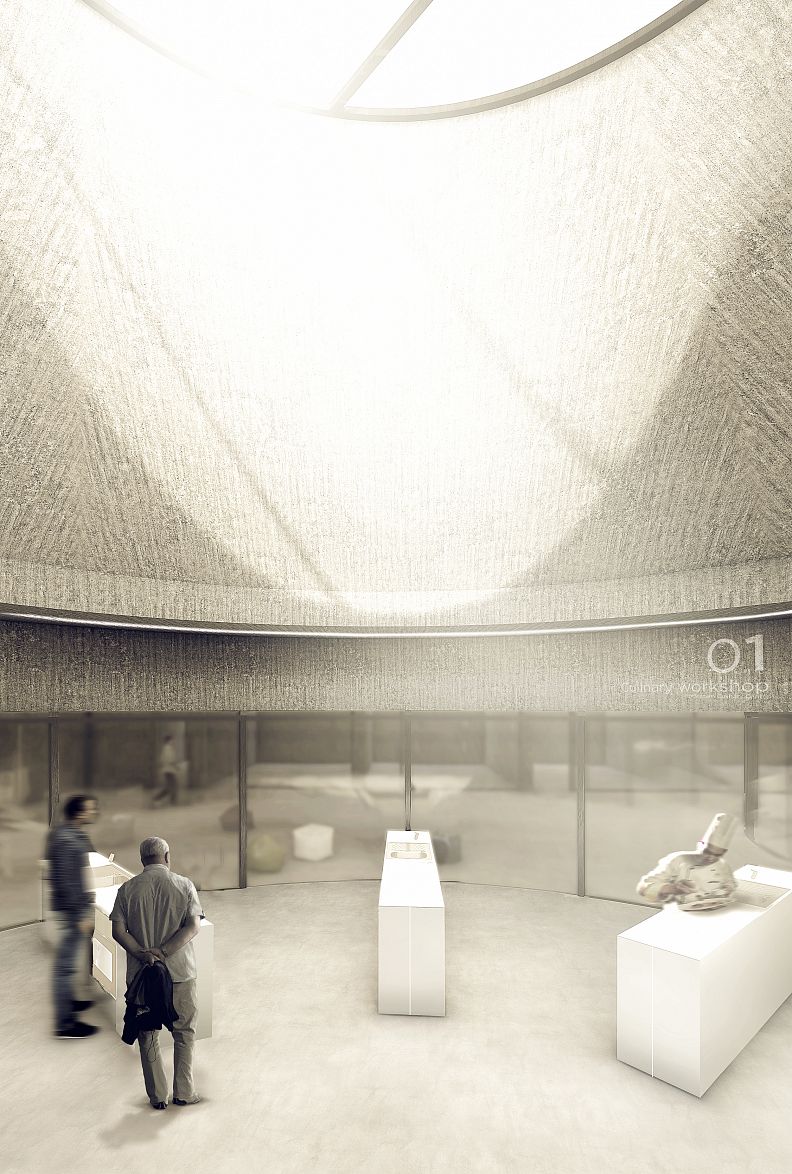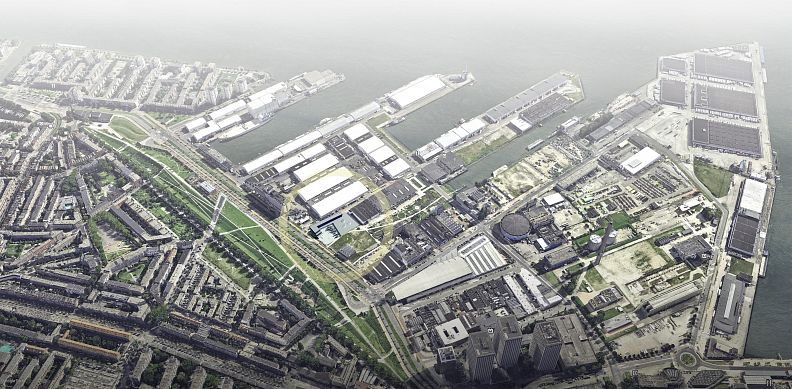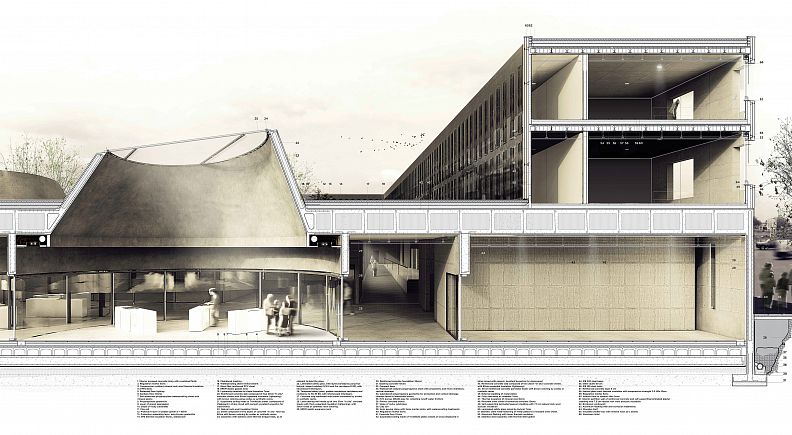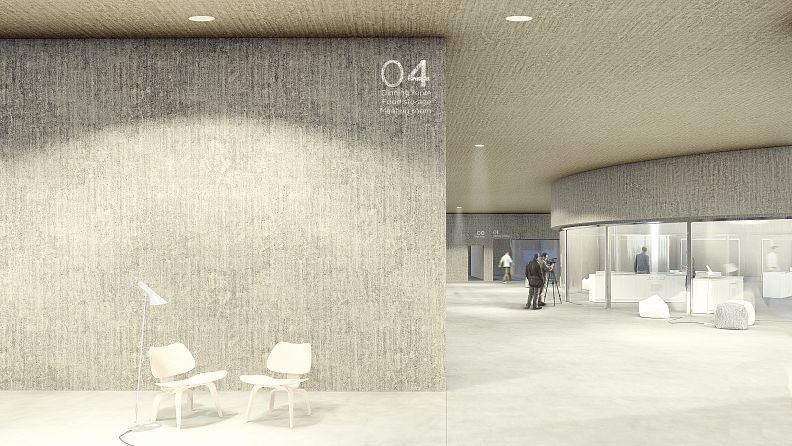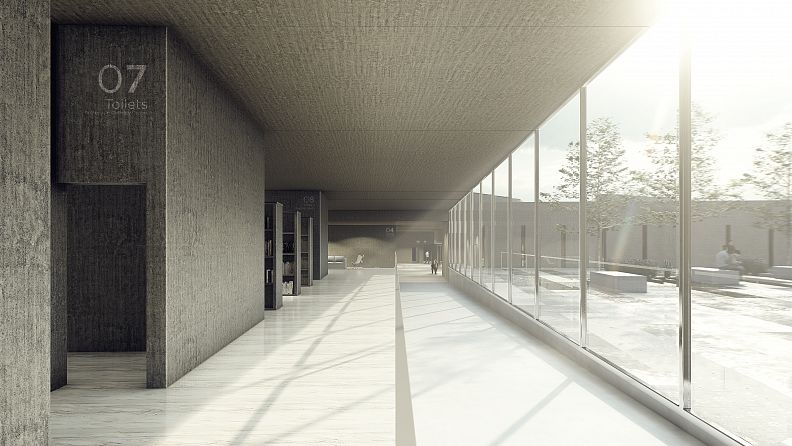Rotterdam Culinary Center

Project idea
The Netherlands has traditionally been a destination for lovers of good food. Beyond a remarkable variety of cheeses, such as Gouda, Edam, or Maasdam, and its renowned margarine, few indigenous gastronomic references have successfully crossed its borders. However, the Netherlands has already reached the 10th place in the world in the list of countries with the most Michelin stars (Michelin Guide 2019) thanks to a large extent, to the professionalism and good work of a group of young chefs whose work stands out for its commitment and high creativity.
In order to consolidate the positive dynamics that Dutch gastronomy has experienced in the last decade, the construction of a Culinary Center is proposed in the city of Rotterdam. The main purpose of this new benchmark institution is training, research, and innovation in culinary techniques from a firm link to the Dutch geographical, productive and cultural context. The new academic center aims to attract students who wish to undertake a professional career in the world of cooking from a multidisciplinary approach. Consequently, training profiles in other disciplines, both technical and artistic, will be highly valued in the admission processes.
The project will be located in the Vierhavensblok area, an area of marked industrial and port character immersed in an urban regeneration process that is promoting the functional and constructive recycling of many existing structures to accommodate new uses linked, mostly, to creative disciplines. The building is bordered to the east by Vierhavensstraat, to the south by Keilestraat, to the west by a mixed-use industrial building, and to the north by a green area.
Project description
The culinary center lies in a hybrid building where teaching and communal living coexist, and it aims to be a point of reference, to become an icon of the city of Rotterdam, so an effort is made to give a distinctive and sculptural character to the building, thanks to overhead lighting elements. At the same time, the building respects and interacts with the low-density neighborhood scale and its materials, especially the metal plate façade which reflects the industrial character so typical of its surroundings.
The building concentrates its most extensive and public program on the ground floor and offers multipurpose services to the most specific culinary areas. The residential area is concentrated on the two upper floors, achieving greater privacy, and offer single, double, quadruple rooms and exclusive rooms for the director and chefs.
The whole idea is centered on a tour.
- The starting point is a large square: the best and widest public space in the area and where local citizens or students from the center can disconnect. It has a double function since it is a space attached to the building where all kinds of crops and aromatic plants necessary for the development of culinary activity are grown.
- Then, after entering the building, we find the most public areas, such as conference rooms, libraries, and administrative uses. But it is the building itself that guides us and leads us through a ramp to the most dreamed space of the project, while we observe the virtues of the exterior urban landscape.
- Finally, a world that is hidden from the outside appears by surprise. A spacious, bright, and lively space that empowers an environment where culinary teaching shines for its flexibility, efficiency, and fluency. The core of the project focuses on this area, especially on the culinary workshops: the part of the program that is most relevant and that acquires great prominence due to its formal design: three large glass cylinders supported on a reinforced concrete structure that is illuminated from above. The light is diffused giving a special vitality to the space of theoretical and practical classrooms that surrounds it. All this allows a strategic, transparent, and centralized vision of the interior space:
this transparency allows shared teaching, which means, that everyone learns from everyone, without having to be part of the class.
Technical information
From a structural and constructive point of view, a clear contrast is achieved between the ground floor (mostly intended for culinary teaching areas) and the first and second floors, which are dedicated exclusively to the residential area for the students of the center. The access floor is structurally resolved with load-bearing reinforced concrete walls that try to cover large openings. For this, a lightened concrete slab composed of expanded polystyrene vaults is used, thus reducing the weight of the roof and favoring its structural behavior. The largest and most vulnerable area of the building is resolved by supporting its weight on a large reinforced concrete perimeter beam, which surrounds the culinary classrooms and exerts a structural counterweight.
However, the rest of the floors have a completely different structural nature. They are covered with a structure based on metal frames in an attempt to reduce the weight of the structure and the envelope.
On the other hand, the large cylindrical skylights which are made up of the most special space of the project (the culinary workshops), are oriented towards the north, allowing great indirect lighting and avoiding possible glare.
The building plays simultaneously with a visual game between the colored exposed concrete façade at the base of the building and the transventilated façade of metal plates; achieving a beautiful dialogue between the lightness of the residential part and the heaviness of the volume in which it sits.
The ventilation system of the facade allows the facade to breathe, thus helping to avoid overheating of the interiors due to direct radiation during the summer, helping to reduce the thermal energy that enters the interior of the culinary center. Furthermore, the air allows the façade to 'breathe' by diffusing the water vapor from the inside out. It also achieves strong water permeability thanks to the fact that the moving air prevents the infiltration of rainwater into the building structure. Finally, excellent thermal behavior is achieved since thermal bridges between the outer structure and the bearing structure are eliminated, saving energy by reducing temperature fluctuations inside.

